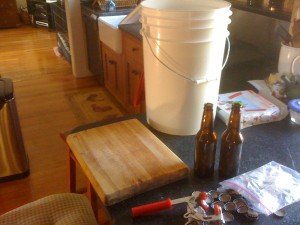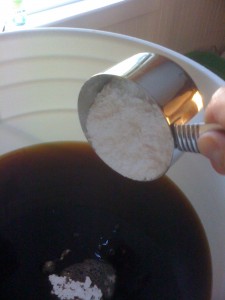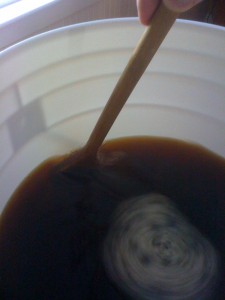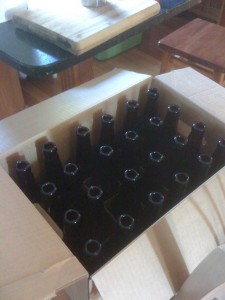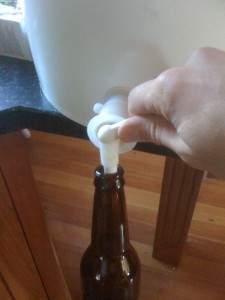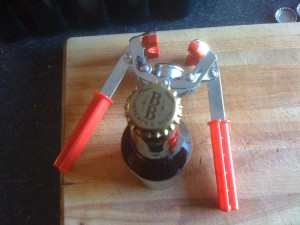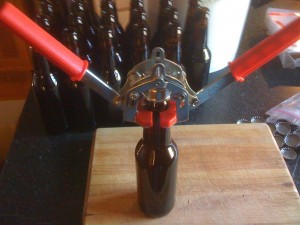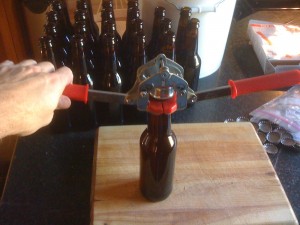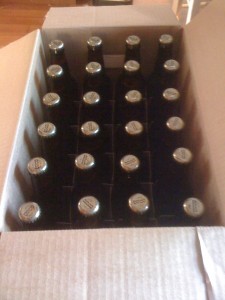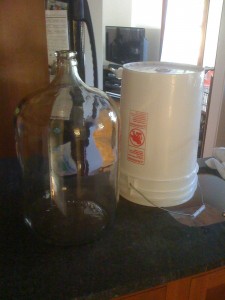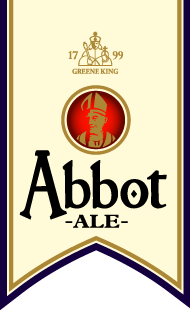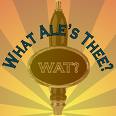Recipe: Chiswick ESB (ver 1.0)
The recipe and process can be found online here. Feedback on this recipe can be found here.
This is my first attempt at brewing one of my all time favorite ales, the beer I would drink the most consistently, Fullers ESB. This ale is one of the first British ales to become widely available in the US, along with Bass. Unfortunately, as with Bass, the flavour of Fullers ESB in the US pales in comparison to a fresh pint served in a Fullers Pub in London. Fullers ESB is also the winner of 7 CAMRA Best ESB awards, Two Best Beer of Britain awards, and two US Beverage Tasting Institutes “World Champion Bitter” medals, among many other honors.
Fullers ESB is probably ‘the’ classic London ESB, an Extra Special/Strong Bitter classed English Pale Ale. As discussed in the post on creating your own beer recipes (here), ESB brews tend to have more of a balance with the malt and bitterness. This beer is a fine example. Written up in the The Real Ale Almanac as an:
Explosion of malt and hops and cooper’s marmalade. Enormous attack of malt and fruit with hop underlay; profound finish with strong Goldings character and hints of orange, lemon, gooseberry and some tannin.
Beer has been brewed at the Fullers Brewery site in Chiswick, known as the Griffen Brewery, since the time of Oliver Cromwell. The brewery existed as a variety of partnerships with its namesake, John Fuller, joining the firm in 1829. In 1845 John Fullers son, John Bird Fuller, was joined by Henry Smith of the brewery Ind Smith, and John Turner, Smiths brother-in-law and head brewer. They formed the company Fuller, Smith & Turner, as it is still know today. Descendants of these 3 families are still actively involved in the day to day running of the company today. More on Fullers here.
On to the ingredients. Standard practice these days is for the the brewery to be forthcoming with its basic ingredients and Fullers in no exception. The site proclaims the malt mix to include Pale Malt (base), Crystal and Goldings, Northdown, Target and Challenger hops.
The Real Ale Almanac confirms the brewers website and includes the addition of Maize. Maize is used in brewing to boost the ABV in the same way as cane sugar. But unlike cane sugar Maize is not 100% fermentable, containing 20% non-fermentable sugars and therefore will not dry the beer as much as cane sugar leaving some sweetness behind. The almanac estimates the bitterness at 35 IBU’s, colour of 16 SRM and a FG of 1013. The website provides two ABV values, 5.5% in the cask and 5.9% in the keg or bottle.
Next stop is to input the ingredients into the beer calculus system on hopville.com and balance the quantities in order to create a workable recipe conforming to the constraints above.
Base Malt: Given this is an extract recipe we need to replace the Pale Malt with a combination of Light DME and Dark DME in order to get the colour and sugar levels high enough without having to use too much crystal malt to boost the colour and in turn overpower the beer. As stated in our research and from personal experience, this is a balanced beer with neither hop nor malt overpowering.
Specialty Grains: Both the Almanac and the web site state the use of Crystal and Maize as the primary specialty grains. After fiddling around on the calculator it became clear we need to use Crystal 120L to get both the caramel, nutty flavour and the deeper colour. Even after using 120 Crystal and the Dark DME the OG of the beer comes in over the recommended 1054-1059 range needed to get the 5.5-5.9% ABV. After consulting some books the recommendation was to add a tiny amount of Black Malt to kick the SRM up to 16 without having to add too much sugar or altering the flavour profile too much.
Hops: The website and Almanac called for quite the mix of hops. Due to the hop shortage, which we are told is about to come to an end, both Northdown and Challenger Hops are really hard to come by. After some research on the BYO hop chart and Brew365, the recommendation is to substitute the Challenger with Perle given it has a similar Alpha % and taste profile. For Northdown the recommendation is to add additional Target following the same reasoning. Only time will tell if this is the right decision, this is why this recipe is Version 1.0. Given the tasting notes call for a strong Goldings aroma and flavour we should go with the Goldings for the Flavour hop. Its now up to Hopville to calculate the appropriate quantities of Bittering and Flavour hops to reach the 35 IBU target.
Yeast: The yeast profile for this brew definitely calls for fruit. The high ABV calls for a yeast with high attenuation. The choice for version 1.0 is Wyeast London Ale. The strain is from the right region and this is a London Ale after all. Wyeast London ESB was up for consideration, but the recipe called for a higher attenuation.
Chiswick ESB (BJCP Beer Style: Extra Special/Strong Bitter, category: English Pale Ale)
- 5 Gallon, 90 min boil
- OG 1059, FG 1013
- 5.9% ABV
- 35 IBU
- 16° SRM (Copper to Deep Copper)
- Ready to drink in 6-7 weeks
Base Malt and Fermentables:
- 3 lbs Light Dry Malt Extract (90 mins)
- 3 lbs Dark Dry Malt Extract (90 mins)
Specialty Grains:
- 11 oz Flaked Corn (Maize)
- 5 oz Crystal Malt – 120L
- 1 oz Black Malt
Hops
- Bittering Hop – 0.8 oz Perle (90 mins)
- Bittering Hop – 0.5 oz Target (90 mins)
- Aroma Hop – 0.7 oz Kent Goldings (15 mins)
Yeast
- Wyeast London Ale (#1028) (Attenuation 73-77%, Flocculation: Medium Low)
Other Additions
- 1 tsp Irish Moss (30 mins)
- Packet of Isinglass Liquid (to help remove any lingering proteins given the low flocculation level of the yeast)
Process
- Please follow the process guidelines outlined in my post here. You will require all the equipment specified here. I found the maize flakes clogged up the strainer while rinsing the specialty grains. I will be researching the best way to incorporate maize when I get a chance.
- Primary Fermentation: 5-7 days at 65-75°
- Secondary Fermentation: 2 weeks at 55° (if you can otherwise just 5-7 days in the same location as the primary)
- Prime and store in the bottle for at least 2 weeks before consuming
- Peak flavour will be reached after 4 weeks in the bottle

